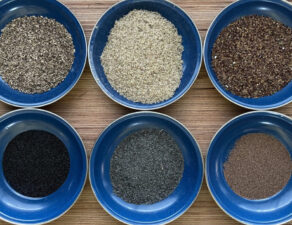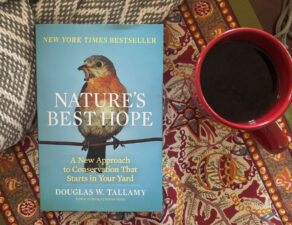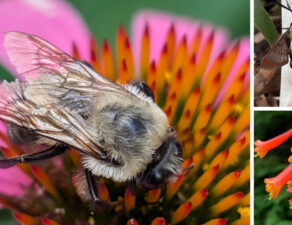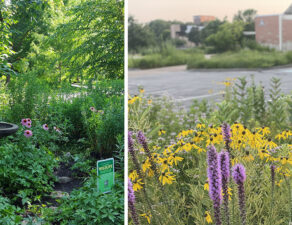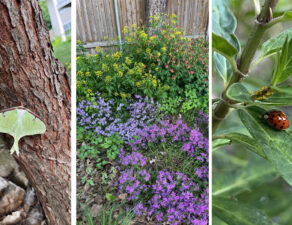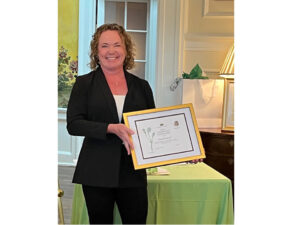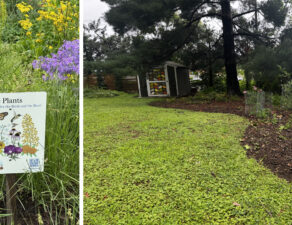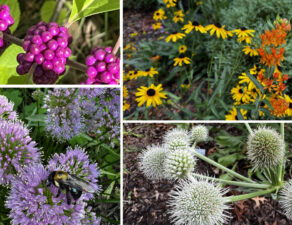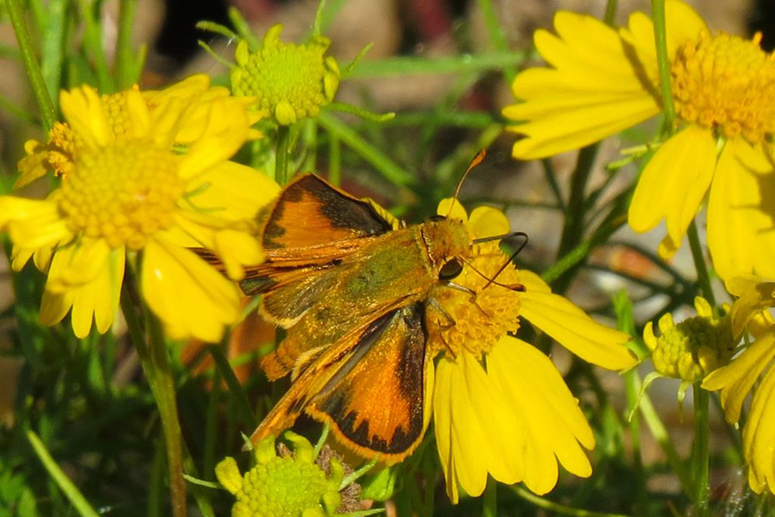
Text and Photos by Tom Schroeder
The plants in our garden are in a slow-motion battle with the creatures that want to eat them. The plants produce defenses, like harmful chemicals or indigestible material, to prevent creatures from consuming them. The creatures evolve ways to overcome those defenses by neutralizing the chemicals or having bacteria that digest cellulose. This battle leads to certain creatures specializing in eating certain plants. There is a group of butterflies whose larva have evolved ways to overcome the defenses of grasses and use them for food. They are called the Grass Skippers. When adding native plants you want to consider the use of native grasses to benefit these cute butterflies.
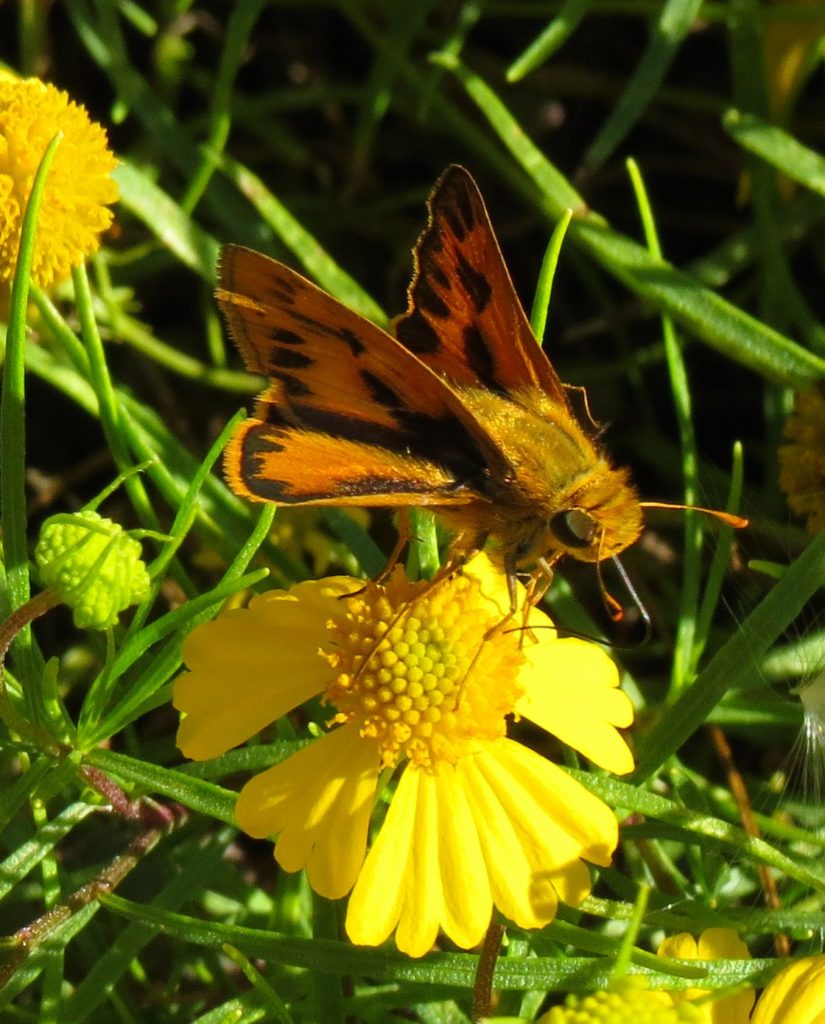
As adults, Grass Skippers are little butterflies that skip from flower to flower in our gardens. Their larva are small caterpillars that feed on grasses. The little caterpillars pull together the edges of grass leaves and bind them with silk to create a little hammock. They shelter inside the hammock during the day and come out to feed at night.
According to Diane Narem, a Grass Skipper expert with the University of Minnesota, the caterpillars of many species will feed on 2 to 6 different types of grasses but will build their shelters in only 1 or 2 types. They prefer clump grasses where the grass blades are close together. The caterpillars overwinter at the base of the grass clump and emerge in the spring to change into an adult butterfly.
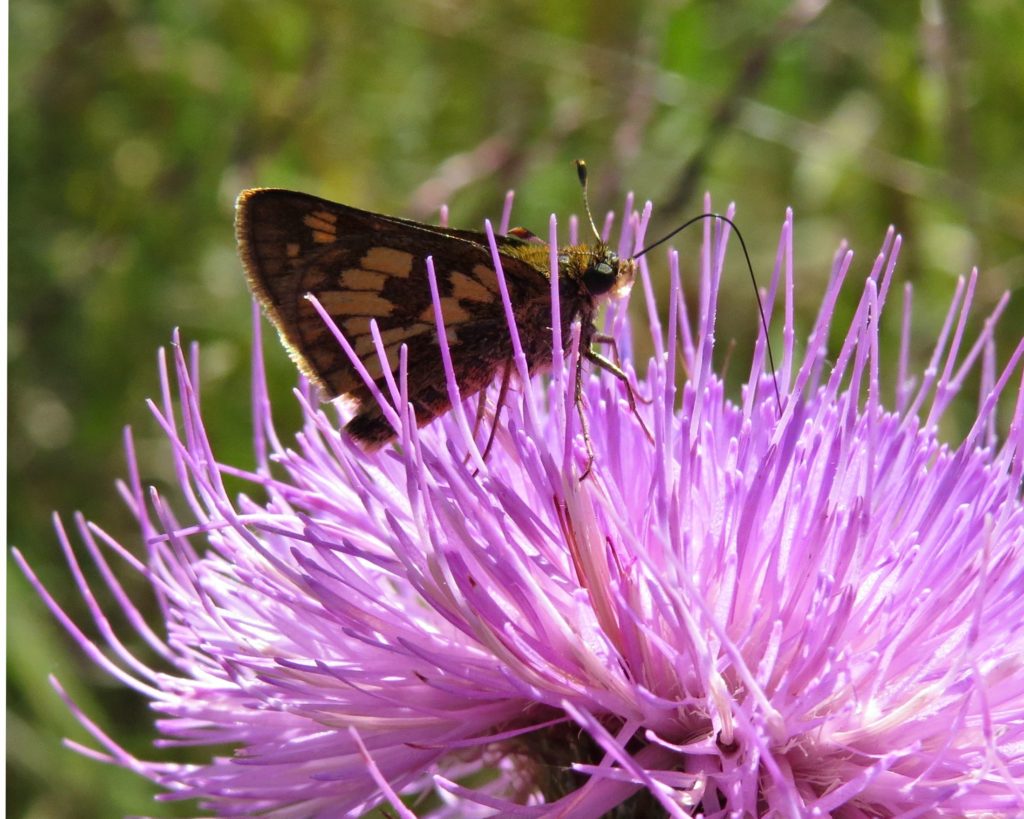
Of the native grass types that do well in gardens, Diane Narem found that 14 butterfly and moth species associated with Little Blue Stem (Schizachyrium scoparium), 9 with Switchgrass (Panicum virgatum), 6 with Prairie Dropseed (Sporobolus heterolepis), and 6 with Canadian Rye (Elymus canadensis). Betsy Betros, in her book A Photographic Field Guide To The Butterflies In The Kansas City Region, lists seven Skipper species common to our area. Their caterpillars are generalist feeders consuming several different types of native grasses and non-native turf grasses. She also lists 3 uncommon or rare Skipper species that feed mainly on Little Blue Stem.
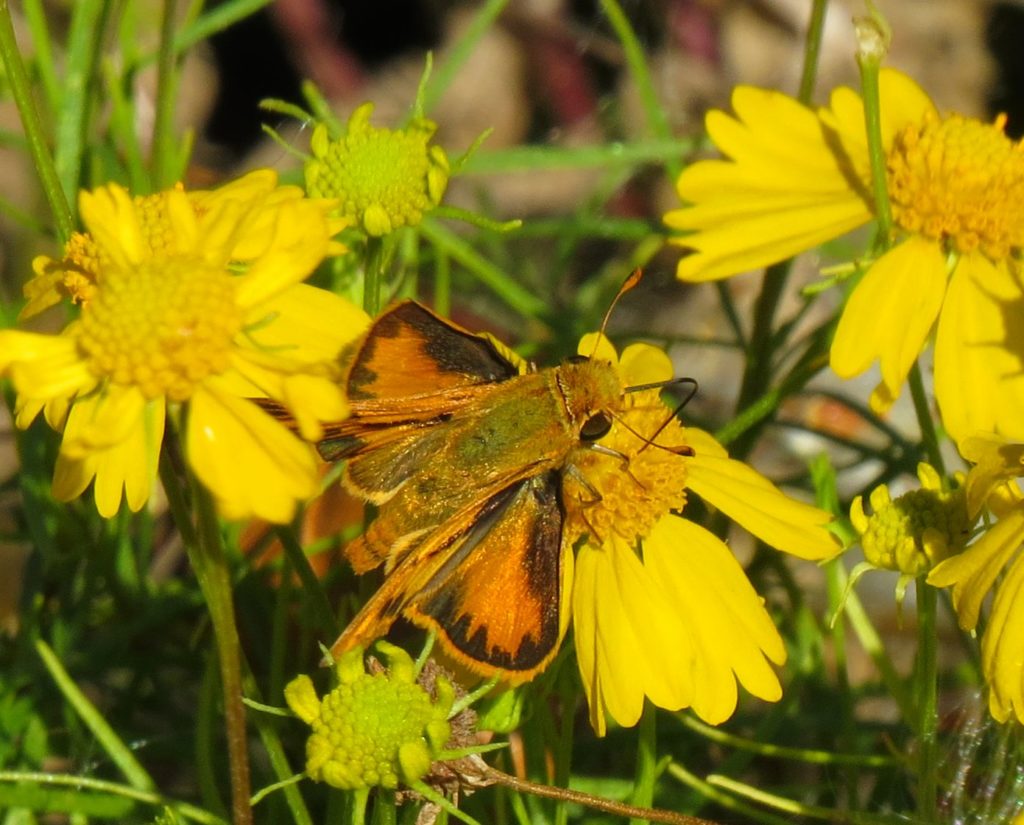
When adding native plants to your garden this season, consider some native grasses like Little Blue Stem, Prairie Dropseed, or Switchgrass. Perhaps a little Skipper butterfly caterpillar will build their tiny hammock in the grass clump and hang out for the summer in your garden.
